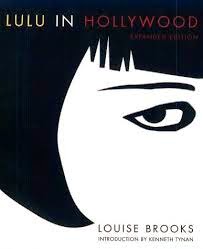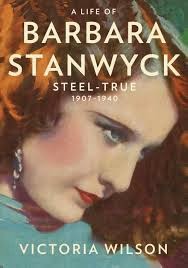Oates, Joyce Carol. Blonde: A Novel. New York: Ecco 2000. Print
First Sentences:
There came Death hurtling along the Boulevard in waning sepia light.
There came Death flying as in a children's cartoon on a heavy unadorned messenger's bicycle.
There came Death unerring. Death not to be dissuaded. Death-in-a-hurry, Death furiously pedaling. Death carrying a package marked *SPECIAL DELIVERY HANDLE WITH CARE* in a sturdy wire basket behind his seat.
Description:
I love swimming in the ocean. The feel of the immense power around me, the swells that lift and drop me, waves that pull me out or allow me to ride them to the shore make up a totally encompassing experience. The ocean itself is indifferent, uncaring whether I swim or not; it just exists as it is.
Reading Joyce Carol Oates' Blonde: A Novel, is an experience similar to swimming in the ocean. This sprawling 700+ page novel is such an engulfing force that rolls along over and around you, allowing you to sense a total power of words, events, and people so rare in fiction. Despite this being a work of fiction, it is an entirely believable "biography," a gripping take on the events and people surrounding the actress Marilyn Monroe.
In Blonde, there are interactions with real people (John Kennedy, Joe DiMaggio, Monroe's mother, Cass Chaplin and Eddy G. Robinson - the sons of Charlie Chaplin and Edward G. Robinson), mixed in with fictionalized agents, producers, and studio doctor/drug suppliers whose names, actions, and motivations are completely from the mind of author Oates.
The book rolls on and on, engulfing readers in details, conversations, thoughts, dreams, and disappointments of each character and how they interact with Marilyn. Readers are immersed with the depth and strength of the depictions of even small events, just like swimming in a powerful ocean. Oates' Marilyn (who prefers to be called "Norma Jeane," rather than the studio name, "Marilyn Monroe") finds it increasingly difficult to transition into the movie star persona. She constantly adjusts make-up, clothes, and eventually drug dosages to create the film star character, causing her to be perpetually late for movie scenes and public events that require "Marilyn" rather than Norma Jeane. Only people she allows to be close to her can see her real personality and call her by her preferred name.
How can such a fictionalized biography be a compelling book when Monroe's real life was so compelling? Well, for me the powerful writing, personalities, and action carried me along from one adventure to the next. I suspended disbelief and just turned myself over to the story-teller. From the commitment of Monroe's mother to a mental institution (true) and Marilyn moving into an orphanage (also true, but with new children and events), to her posing for her first nude photo (portrayed as a desperate need for money when in reality it was a conscious choice when cash wasn't a factor), Oates' narration about Monroe are so believably told that it was easy to be absorbed into this world.
You watch as Marilyn tries to break into movies and earn respect for her acting abilities in order to land starring, intelligent roles. She is constantly studying acting, taking classes from renowned teachers, and expanding her talent to secure a few great roles. But the studio contract forces her to take roles they choose for her, mostly as the funny, beautiful dumb blonde.
And, of course, there are new interpretations of her relationships. Her first marriage at age 15 was to get her out of a house when the foster father started getting eyes for her. Marriages to Joe DiMaggio and Arthur Miller, as well as her relationship with John Kennedy are presented as logical pathways in her constant search for a father figure and someone to provide her with children and a family. Her fictionalized relations with Cass and Eddy G were based on freedom, sex and drugs. Oates even offers an interesting scenario where Kennedy's people play a role in her drug overdose death.
Blonde is so thoroughly detailed and logical in its portrayals of characters that it was easy to think this was the real life story of Marilyn Monroe. Being a fictionalized account took nothing away from the fascinating inner and public worlds of this iconic, tragic actress.
I love swimming in the ocean. The feel of the immense power around me, the swells that lift and drop me, waves that pull me out or allow me to ride them to the shore make up a totally encompassing experience. The ocean itself is indifferent, uncaring whether I swim or not; it just exists as it is.
Reading Joyce Carol Oates' Blonde: A Novel, is an experience similar to swimming in the ocean. This sprawling 700+ page novel is such an engulfing force that rolls along over and around you, allowing you to sense a total power of words, events, and people so rare in fiction. Despite this being a work of fiction, it is an entirely believable "biography," a gripping take on the events and people surrounding the actress Marilyn Monroe.
In Blonde, there are interactions with real people (John Kennedy, Joe DiMaggio, Monroe's mother, Cass Chaplin and Eddy G. Robinson - the sons of Charlie Chaplin and Edward G. Robinson), mixed in with fictionalized agents, producers, and studio doctor/drug suppliers whose names, actions, and motivations are completely from the mind of author Oates.
The book rolls on and on, engulfing readers in details, conversations, thoughts, dreams, and disappointments of each character and how they interact with Marilyn. Readers are immersed with the depth and strength of the depictions of even small events, just like swimming in a powerful ocean. Oates' Marilyn (who prefers to be called "Norma Jeane," rather than the studio name, "Marilyn Monroe") finds it increasingly difficult to transition into the movie star persona. She constantly adjusts make-up, clothes, and eventually drug dosages to create the film star character, causing her to be perpetually late for movie scenes and public events that require "Marilyn" rather than Norma Jeane. Only people she allows to be close to her can see her real personality and call her by her preferred name.
How can such a fictionalized biography be a compelling book when Monroe's real life was so compelling? Well, for me the powerful writing, personalities, and action carried me along from one adventure to the next. I suspended disbelief and just turned myself over to the story-teller. From the commitment of Monroe's mother to a mental institution (true) and Marilyn moving into an orphanage (also true, but with new children and events), to her posing for her first nude photo (portrayed as a desperate need for money when in reality it was a conscious choice when cash wasn't a factor), Oates' narration about Monroe are so believably told that it was easy to be absorbed into this world.
You watch as Marilyn tries to break into movies and earn respect for her acting abilities in order to land starring, intelligent roles. She is constantly studying acting, taking classes from renowned teachers, and expanding her talent to secure a few great roles. But the studio contract forces her to take roles they choose for her, mostly as the funny, beautiful dumb blonde.
And, of course, there are new interpretations of her relationships. Her first marriage at age 15 was to get her out of a house when the foster father started getting eyes for her. Marriages to Joe DiMaggio and Arthur Miller, as well as her relationship with John Kennedy are presented as logical pathways in her constant search for a father figure and someone to provide her with children and a family. Her fictionalized relations with Cass and Eddy G were based on freedom, sex and drugs. Oates even offers an interesting scenario where Kennedy's people play a role in her drug overdose death.
Blonde is so thoroughly detailed and logical in its portrayals of characters that it was easy to think this was the real life story of Marilyn Monroe. Being a fictionalized account took nothing away from the fascinating inner and public worlds of this iconic, tragic actress.
But she was a born actress. She was a genius, if you believe in genius. Because Norma didn't have a clue who she was, and she had to fill this emptiness in her. Each time she went out, she had to invent her soul. Other people, we're just empty; maybe in fact everybody's soul is empty, but Norma was the one to know it.Now I'll have to get a real biography and compare them. Stay tuned
____________________
If this book interests you, be sure to check out:
If this book interests you, be sure to check out:
Spoto, Donald. Marilyn Monroe: The Biography
Extensively researched biography into the people and events of the star's live as recounted by the people she knew, actors and directors, letters, films, and writings.




